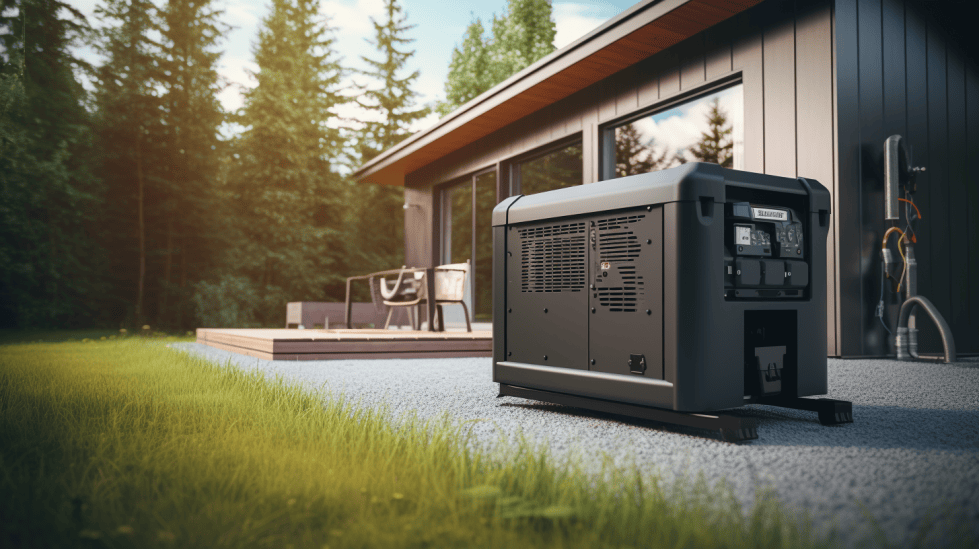How Many kW Generator to Run a House
Determining the appropriate generator size for your home is an essential task that requires careful consideration. To ensure you have the right size generator, it is important to understand your home’s power needs and the wattage requirements of the appliances you need to run during a power outage. Different types of generators can produce varying amounts of kilowatts (kW), so you must consider the total wattage needed to power your home.
Calculating the total wattage required to run your house involves assessing the power requirements of essential appliances, lighting needs in a power outage, and energy consumption of common household appliances. With this information at hand, you can properly size your generator to meet your home’s demands without risking damage to your appliances or overloading the generator. Accurately sizing a generator not only ensures a reliable power source during outages but can also save you money and extend the life of your generator.
Key Takeaways
- Understand your home’s power needs to properly size a generator
- Assess the wattage requirements of essential appliances and lighting needs
- Accurately sizing a generator can save money and extend its life
Understanding Power Needs
When it comes to determining the right generator for my house, I must first assess my power requirements. I need to think about the essential appliances I want to keep running during a power outage and how much electricity they consume. This information will help me identify the total wattage needed to power my home efficiently.
An important factor to consider is the difference between running watts and starting wattage or surge wattage. Running watts are the continuous power needed to operate an appliance, while starting wattage is the extra energy required to start certain appliances, such as my refrigerator or air conditioning unit. By knowing their respective wattages, I can be more accurate in determining my overall power needs.
I’ve realized that my energy consumption varies depending on the appliances I use and the time of day. For instance, during the day, I might rely more on my TV, refrigerator, and air conditioning unit. In the evening, I may use a microwave, electric stove, and a few lights. By making a list of the appliances I need and their respective wattages, I can better gauge the amount of power required for different situations.
To further ensure I choose the right generator for my home, I will take into account the total running wattage and starting wattage of all my essential appliances. This way, I can accurately estimate how much energy my household needs and select a generator that can meet those requirements comfortably.
Being aware of my power needs and understanding the different aspects of energy consumption has helped me make a more informed decision. By considering the running watts, starting wattage, and total wattage, I can confidently choose the right generator for my home.
Different Types of Generators and their Sizes
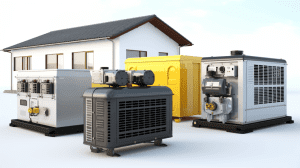
When it comes to generators, there are various types and sizes to choose from. It’s essential for me to know the differences between them and how to select the right size generator based on my needs.
First, let’s talk about portable generators. These are smaller generators that can be easily moved around. They typically range between 1 kW to 7 kW link and are perfect for providing power during short-term outages, camping trips, or in remote areas. Keep in mind, though, that portable generators may not provide enough power for bigger homes or running multiple large appliances simultaneously.
A popular alternative to portable generators is inverter generators. These devices use special technology to produce clean, stable power that’s safe for sensitive electronics like laptops, smartphones, and medical equipment. They are usually lighter and quieter than traditional portable generators but might be slightly more expensive.
Now, let’s discuss whole house generators, also known as home backup generators or home standby generators. These are larger units that can provide more power, typically starting at around 10 kW and going up to 50 kW or even more. They are installed permanently outside the home and connect directly to the electrical system. A whole house generator can provide power to an entire home, making it the best option for larger homes or those with critical power needs like medical equipment.
Solar generators have recently gained popularity as a green and sustainable power source. Common solar generator sizes range from 500 watts to over 6,000 watts for various types of homes. They convert sunlight into electricity and store it in a battery, which can then be used to power appliances and devices during blackouts or in off-grid situations. When choosing a solar generator, it’s important to consider factors like battery capacity, efficiency, and the weather in your area.
So, how do I determine the right size generator for my home? A good starting point is to take inventory of my appliances’ wattages, which can usually be found on the bottom, back, or nameplate of each unit link. Additionally, considering the size of my home and the type and number of devices and appliances I plan to use simultaneously can help me make an informed decision.
In conclusion, there are several different generators available in various sizes, from portable to whole home units. By considering my specific power needs, the size of my home, and my budget, I can confidently choose the best generator for my situation.
Calculating Total Wattage
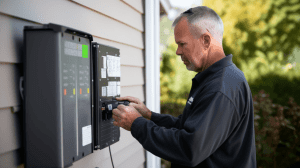
When it comes to determining the right generator size for your home, calculating the total wattage is an essential step. To do this, first, make a list of all the home appliances you’d like to power with your generator. Be sure to include essential appliances like refrigerators and air conditioning units, as well as non-essential appliances like TVs or computers, if desired.
Next, find out the number of watts each appliance uses. Start by checking the appliance label or owner’s manual, as this information is often provided there. If the wattage isn’t listed, you can calculate it by multiplying an appliance’s input/output voltage by its current consumption (amps). For example, a device with an input of 120 volts and a current of 5 amps uses 600 watts (120 x 5).
Now that you know the wattage for each appliance, add up the values to determine your home’s total wattage. Keep in mind that some appliances, like air conditioners and refrigerators, have a higher starting wattage. This is important to consider when choosing a generator, as the generator must be able to handle the higher initial wattage if multiple appliances are starting up at the same time.
Once you have your total wattage calculated, you can use tools like Generator Size Calculator to determine the right whole-house generator sizing based on your specific requirements. Remember, it’s vital to choose a generator capable of providing enough power to meet your home’s needs during a power outage or other emergency situations.
Concept of Running and Starting Wattage
When it comes to understanding the power requirements of a house, it’s essential to grasp the concepts of running and starting wattage. Running wattage, or continuous wattage, refers to the power needed to keep an electrical appliance or device functioning after it has started. On the other hand, starting wattage, also known as start-up or surge wattage, is the additional power an appliance requires to start up.
For instance, let’s consider a refrigerator. After it begins functioning, it might need 350 watts as running wattage to keep operating. However, when starting the fridge, it may require up to 1,050 watts due to the extra power needed by the compressor to kickstart. It’s crucial to consider both running and starting wattages when selecting a generator to power a house.
I would also like to emphasize the significance of calculating the total kilowatts (kW) for all devices and appliances within the household. To do this, simply add up the individual running and starting wattages of each item. Remember that the generator selected should be capable of producing enough power to accommodate the highest starting wattage and maintain a steady output to cover all running wattages.
It’s essential to note that not all appliances have a high surge or start-up wattage. Items such as lights, laptops, and TVs typically have similar running and starting wattages. However, appliances with electric motors, like refrigerators, air conditioners, and sump pumps, often require a higher wattage during start-up.
By understanding the concept of running and starting wattage, I can better determine the generator size needed to provide adequate power to my home and avoid overloading or under-powering my electrical systems. It’s crucial to conduct this assessment accurately to ensure the generator selected meets the specific needs of my household while keeping the appliances and devices protected.
Importance of Sizing the Generator Correctly
In order to select the right size generator for your house, it’s essential to take into account several important factors. When I was choosing a generator for my home, the main goal was to ensure that it had enough power to run critical appliances, such as refrigerators, air conditioning systems, and sump pumps, while also providing sufficient capacity for common household items like lights, TVs, and computers.
Firstly, knowing the total wattage consumed by the electrical devices in my home played a crucial role in determining the appropriate size of the generator. I had to make a list of the appliances that needed to be powered during a power outage. Once I figured out the total wattage, it gave me an idea of the minimum power my generator should provide.
While it’s a good idea to add some buffer to the minimum wattage requirements, I also had to consider the cost of the generator and its efficiency. For example, if the total wattage requirement was around 7,000 watts, selecting a generator with a 10,000-watt capacity would provide enough power, and also account for any fluctuations or future electrical upgrades.
Another important factor to consider is whether the generator will be used for air conditioning systems. If you live in a region with hot summers, like I do, having the ability to power an air conditioner during a power outage can be a significant advantage. However, air conditioners require a surge of power to start, and an adequately sized generator must be chosen to accommodate this initial load without overloading the system.
Lastly, it’s also helpful to take note of any unique items or equipment that may require additional power, such as medical equipment or electric vehicle charging stations. This can greatly impact the choice of the generator size.
In summary, choosing the right size generator for my house required careful consideration of many factors. By properly assessing my home’s power needs, I was able to select a generator that could reliably provide enough power during a power outage, ensuring the comfort and safety of my household.
Assessing Power Requirements of Essential Appliances

When I plan to buy a generator for my home, the first thing I need to do is assess the power requirements of my essential appliances. This is important because an undersized generator may not be able to handle all my needs, while an oversized one may waste fuel and resources.
I start by listing all the essential appliances and electrical devices in my home, such as:
- Sump pump
- Natural gas furnace
- Refrigerator
- Medical equipment (if applicable)
- Security system
- Light bulbs
- Water heater
- Electronic devices (e.g., computers, TVs, chargers)
Next, I’ll need to check the wattage of each appliance. Sometimes, it’s printed on a label or mentioned in the owner’s manual. If it’s not, a quick online search might yield the information. It’s essential to consider both the running (continuous) wattage and the surge (startup) wattage, as some appliances like sump pumps and refrigerators require more power when they first turn on.
Once I have all the wattages, I can add the running wattages of all the essential appliances together. This will give me the minimum continuous power requirement for my home. However, I also need to account for surge wattage – typically, I’ll choose the appliance with the highest surge wattage and add that to my total.
For example, if my essential appliances have the following running and surge wattages:
- Sump pump: 800W running / 1200W surge
- Natural gas furnace: 500W running / 700W surge
- Refrigerator: 150W running / 600W surge
- Water heater: 4000W running / 4500W surge
My minimum continuous power requirement would be 800 + 500 + 150 + 4000 = 5450W. Additionally, since the water heater has the highest surge wattage (4500W), I will add that to the total running wattage, resulting in 5450 + 4500 = 9950W.
Having calculated my power requirements, I can now make a more informed decision when shopping for a generator. Remember, it’s better to slightly oversize your generator than risk overloading it with too many appliances, especially considering essential ones like medical equipment and security systems.
Insights into Transfer Switch
When it comes to powering a house with a generator, one important component that should not be overlooked is the transfer switch. I have come across several scenarios where homeowners wonder about the capability of their transfer switch or if it is adequate for their generator size. For example, a 100 amp transfer switch with a 15KW generator is commonly asked about.
Based on my research and understanding, a transfer switch allows homeowners to safely connect their generators to their home’s electrical panel. It also helps to prevent back-feeding that could damage the generator or pose a risk to utility workers fixing the power lines. There are mainly two types of transfer switches: manual transfer switches and automatic transfer switches.
Manual transfer switches require the homeowner to physically switch the power source from the utility company to the backup generator in case of a power outage. While this option is less expensive, it may not be ideal for individuals who travel frequently or aren’t confident in their ability to switch it properly in an emergency. On the other hand, automatic transfer switches automatically detect a power outage and automatically switch the power source to the backup generator without any intervention.
The selection of a transfer switch depends on the generator size and the power requirements of your home. It is crucial to assess these factors beforehand to ensure safe operation and seamless switching in case of a power outage. A licensed electrician can help you determine the appropriate transfer switch size according to your needs.
In conclusion, transfer switches play a vital role in connecting a generator to a home’s electrical system. Paying attention to generator size, power requirements, and the type of transfer switch will make a significant difference in the safety and effectiveness of your backup power solution.
Professional Guidance for Installation
As a homeowner, it’s essential to have a professional and licensed electrician handle the installation of your generator. I understand that it’s crucial not only for safety but also for compliance with the National Electrical Code (NEC).
I emphasize that you should hire a professional electrician because they have the expertise to assess your home’s power needs accurately, ensuring that the generator’s capacity aligns with your household consumption. They can also provide technical guidance on selecting a generator that best suits your requirements, such as the wattage, size, and fuel type.
In my experience, it’s common for installation costs to vary, depending on the complexity of the setup and the chosen generator type. Homeowners should be prepared to invest in quality installation services to guarantee long-lasting performance and safety. A licensed electrician should always follow the NEC guidelines during installation, ensuring proper grounding, wiring, and load balancing.
Remember, having a generator professionally installed not only increases the life of the equipment but also prevents hazards and avoids voiding the warranty. While there might be tempting DIY options, working with a licensed electrician ensures that your home’s power system abides by safety standards and provides reliable, efficient performance.
Presence of Solar Panels and Its Impact
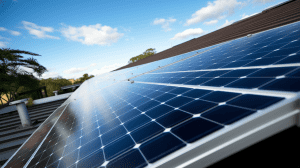
I recently looked into how having solar panels could impact the requirement for a kW generator to run a house. Adding solar panels to your home can have a significant effect on your energy usage and the size of the generator needed to maintain power during outages.
When you install solar panels, they convert sunlight into electricity that can be used in your home. This means that the power generated by solar energy can offset or entirely eliminate your reliance on traditional utilities. As a result, solar panels can reduce the power requirements for your generator during a power outage.
Solar generators are a popular choice for homeowners who want to rely on renewable energy while maintaining the backup capacity of a generator. A solar generator uses solar panels to charge a battery, which then powers the devices in your home. The size of the solar generator needed to run a house primarily depends on your energy consumption, the efficiency of the solar panels, and the amount of sunlight available.
For a home with average energy consumption, a solar generator with a power output of around 3.6kWh and a solar charging capacity of up to 1,600W can be sufficient for a small household. For larger households or homes with higher energy consumption, a whole-home solar generator with a solar charging capacity of up to 3,200W may be necessary.
While determining the presence and impact of solar panels, it’s crucial to understand your energy needs and the performance capabilities of your solar panels. Maximizing the efficiency of solar panels depends on factors such as panel placement and type, roof angle, and available sunlight in your area.
In conclusion, having solar panels or a solar generator can significantly impact the required size of a kW generator to run a house, depending on your energy consumption and the efficiency of the solar energy system. Installing solar panels not only helps in reducing your environmental footprint but also saves you money on utility bills and generator-related expenses.
Lighting Needs in a Power Outage
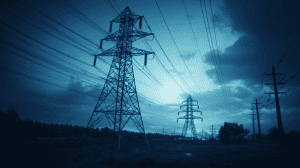
When it comes to calculating the size of a generator needed to run a house, I understand the importance of considering our lighting needs during a power outage. Lighting not only enables us to perform our daily tasks, but it also plays a vital role in maintaining the security of our home.
I know that the power consumption of various light bulbs is an essential factor to consider. For example, a 60-watt incandescent light bulb will consume more energy than a 14-watt LED light bulb providing the same amount of light. So, by making a list of all the light bulbs in my house and noting their wattages, I can estimate the total wattage needed for lighting.
Additionally, it’s essential to consider the power needs of our security system. A basic home security system typically requires about 20 watts of power for its operation. Our lighting and security system needs should be factored into the total wattage when choosing the appropriate generator size.
To make sure I have an energy-efficient lighting setup during a power outage, I can replace older, energy-consuming incandescent light bulbs with more energy-efficient LED or CFL bulbs. This will not only help lower the wattage consumption but also help me save on fuel costs for running the generator.
In summary, I’ll consider my home’s lighting needs, including the number and wattage of light bulbs and the power requirements of our security system, in determining the appropriate generator size for my house during a power outage. Being prepared for a power outage with the right generator will ensure that my family and I can continue our daily routines and stay safe in the absence of electricity.
Considering Energy Consumption of Common Household Appliances
When determining the appropriate generator size for my home, energy consumption of common household appliances is an important factor to consider. As these appliances often play a significant role in everyday life, it is essential to understand their general energy consumption.
In my home, a variety of electrical appliances, both big and small, can contribute to the overall energy use. Larger appliances such as a water heater can consume up to 4500 watts, while smaller appliances like a microwave might only use around 1000 watts.
Aside from these primary appliances, numerous electronic devices also add to the total energy consumption. For example, a television typically uses around 100-400 watts, whereas a computer ranges from 150-800 watts. Furthermore, it is essential to factor in the power requirements of lighting fixtures and other minor electronic devices when calculating overall energy consumption.
In order to estimate my home’s energy consumption, I must consider the watts of power utilized by each appliance and device throughout the day. This can be calculated by multiplying an appliance’s wattage by the number of hours it is in use daily.
Another crucial aspect to consider is that generators come in various sizes. A smaller home might only require a 10 kW generator, while larger homes could need a generator with greater capacity. It is important to choose the correct size based on my home’s energy consumption to ensure all appliances and devices can be powered efficiently.
Lastly, safety should not be overlooked when using generators for home use. Proper ventilation must be ensured to avoid harmful carbon monoxide gas buildup. Additionally, it is wise to invest in a quality carbon monoxide detector as a precautionary measure.
By evaluating the energy consumption of common household appliances in relation to the generator size, I can make an informed decision on the most suitable generator for my home.
Additional Factors to Consider
When determining how many kilowatts (kW) generator I need to run my house, I must take into consideration various factors beyond just the total wattage of my household appliances. One of the first questions I should ask myself is whether I want to power my entire house or just the bare minimum essentials during a power outage.
The best way to start is by taking a closer look at my home’s square footage as well as the specific power needs of the appliances and devices I plan to use during an emergency. For instance, air conditioning is a major power consumer in many households, and I must decide if it’s necessary to include it in my back-up power plan.
A critical factor to keep in mind is the type of power generation I prefer. While fossil fuel generators are a popular choice, they come with certain disadvantages such as higher maintenance requirements and dependence on fossil fuels. Solar generators or battery storage systems might be a better option for me if I prefer a cleaner and more eco-friendly alternative.
The first step in determining the appropriate generator size is to calculate the total wattage of all the appliances I want to power during an outage. This can be done by checking the labels or owner’s manuals of each device for information on input/output voltage, current consumption, and wattage. Besides, I should also account for the startup surge power requirements of specific appliances like refrigerators or air conditioners, which may be higher than their running wattage.
Lastly, it’s crucial to choose a generator with some excess capacity to avoid overloading it during unforeseen circumstances. For instance, if I calculate my total power requirements to be 6,000 watts, I might consider getting a generator with a capacity of 7,000 watts or slightly higher to ensure safe and reliable power generation during an emergency.
By considering all these factors, I can make a well-informed decision for selecting the most suitable generator to keep my home running smoothly in the event of a power outage.
Frequently Asked Questions
What size generator is needed for an average home?
For an average home, an 8-10kW generator might be suitable to run essential appliances. However, the size of the generator you need depends on the total wattage of the appliances you want to power simultaneously in your house. I suggest you calculate your power requirements to find the right generator size for your needs.
Will a 7500 watt generator power my house?
A 7500 watt generator can run most of the essential appliances in a house, but it might not be enough to power everything simultaneously. It depends on the total wattage required by the devices you run. I would recommend calculating the wattage requirements of your home and comparing it to the capacity of the 7500-watt generator.
How to calculate the appropriate generator size for a house?
To calculate the appropriate generator size for your house, you need to determine the total power consumption of all the appliances and devices you want to power simultaneously. This can be done by adding up the wattage requirements of each appliance and device. You should pay attention to both running and starting wattage of the appliances, as some might require more power when starting up.
What factors should be considered when choosing a home generator?
When choosing a home generator, you should consider factors such as fuel type, noise level, ease of installation, maintenance requirements, and cost. In addition, look for features like automatic startup and shutdown, multiple outlets, and transfer switches for safe and efficient operation. I recommend researching different generator models and reading customer reviews to find one that suits your needs and preferences.
Is a 10kW generator sufficient for a 3-bedroom house?
A 10kW generator might be enough for a 3-bedroom house, but it primarily depends on the appliances and devices you want to power during a power outage. Calculate the total wattage requirements for your house, considering both starting and running wattage, to determine if a 10kW generator is sufficient for your needs.
How does a whole house generator compare to a smaller unit?
A whole house generator can power all your appliances, lights, and electronic devices, ensuring you have sufficient power during an outage. These generators generally have higher wattage capacities and an automatic transfer switch that connects to your home’s electrical panel. On the other hand, a smaller unit usually powers only essential appliances and may require manual connection through extension cords. Whole house generators are more expensive and require professional installation, but they offer convenience and peace of mind during power outages.


